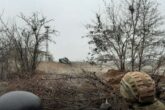June 17, 2014
New Komeito: if Japan enters a combat zone, turn right ‘round and come on home
Big things are afoot in Tokyo, as Prime Minister Shinzo Abe’s government nears a milestone in its attempts to make Japan a more normal country on national defence. Abe wants to allow Japan limited exercise of the right of collective self-defence, through reinterpretation of country’s pacifist constitution. His party, the LDP, is in intensive discussions with its coalition partner, New Komeito, in order to get a final deal approved by 22 June. The United States will accept and support whatever results from Japan’s sovereign democratic process—especially as any progress on the long-time sticking point of collective self-defence is better than none. But in a disappointing development, the LDP appears to have made a concession that forecloses an immense opportunity to advance the US–Japan alliance to new levels of coordination, interoperability and, ultimately, efficacy.
At issue is what is called ‘integration with the use of force’ in situations where Japan hasn’t come under direct attack. The question is whether, in a regional contingency—think Taiwan, the Korean Peninsula, or even a Malacca Strait crisis—the Japan Self-Defense Forces (JSDF) could operate in support of US forces conducting combat operations. Current laws and regulations limit the JSDF to providing ‘rear area support,’ such as replenishment, refueling, and data sharing, only in non-combat zones; as soon as shooting starts, the JSDF must steam away. Abe sought to extend the provision of rear area support to combat zones as well, but he appears for the moment to have given up on this particular point, with the exception of search and rescue operations. Keeping the JSDF almost completely out of contested spaces might make political sense to get New Komeito’s buy-in on this and other important issues, but it foregoes a potential operational windfall for the US–Japan alliance as a whole.
More from CNAS
-
North Korea Reveals Troop Dispatch to Russia amid U.S.-South Korea Policy Talks
North Korea has confirmed for the first time that its troops are operating in Russia, and it is preparing to rewrite its party charter with the possibility of officially namin...
By Dr. Go Myong-Hyun
-
Chinese Maker of Bitcoin-Mining Machines Is a Security Threat, Says Expert
Bloomberg News reports that a Chinese manufacturer, Bitmain Technologies Ltd, that sells most of the world’s Bitcoin-mining machines — including 16,000 of them to a venture ba...
By David Feith
-
Defense / Transatlantic Security
When Defense Becomes Destruction: Austria-Hungary’s Mistake and Ukraine’s RiskThis article was originally posted on War on the Rocks. The southeastern Polish city of Przemyśl, with its elegant 19th century Habsburg-era train station, remains one of the ...
By Franz-Stefan Gady
-
Defense / Transatlantic Security
Ukraine’s Catch-22 MomentThis article was originally published in the Financial Times. In Joseph Heller’s wartime classic, Catch-22, the protagonist Yossarian seeks out the US army surgeon Doc Daneeka...
By Franz-Stefan Gady




